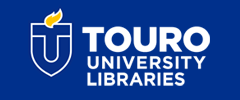NYMC Faculty Publications
Allogeneic Transplantation to Treat Therapy-Related Myelodysplastic Syndrome and Acute Myelogenous Leukemia in Adults
Author Type(s)
Faculty
DOI
10.1016/j.jtct.2021.08.010
Journal Title
Transplantion and Cellular Therapy
First Page
923.e1
Last Page
923.e12
Document Type
Article
Publication Date
11-2021
Department
Pediatrics
Second Department
Health Behavior and Community Health
Keywords
Humans, Leukemia, Myeloid, Acute, Middle Aged, Myelodysplastic Syndromes, Retrospective Studies, Transplantation Conditioning, Transplantation, Homologous
Disciplines
Medicine and Health Sciences
Abstract
Patients who develop therapy-related myeloid neoplasm, either myelodysplastic syndrome (t-MDS) or acute myelogenous leukemia (t-AML), have a poor prognosis. An earlier Center for International Blood and Marrow Transplant Research (CIBMTR) analysis of 868 allogeneic hematopoietic cell transplantations (allo-HCTs) performed between 1990 and 2004 showed a 5-year overall survival (OS) and disease-free survival (DFS) of 22% and 21%, respectively. Modern supportive care, graft-versus-host disease prophylaxis, and reduced-intensity conditioning (RIC) regimens have led to improved outcomes. Therefore, the CIBMTR analyzed 1531 allo-HCTs performed in adults with t-MDS (n = 759) or t-AML (n = 772) between and 2000 and 2014. The median age was 59 years (range, 18 to 74 years) for the patients with t-MDS and 52 years (range, 18 to 77 years) for those with t-AML. Twenty-four percent of patients with t-MDS and 11% of those with t-AML had undergone a previous autologous (auto-) HCT. A myeloablative conditioning (MAC) regimen was used in 49% of patients with t-MDS and 61% of patients with t-AML. Nonrelapse mortality at 5 years was 34% (95% confidence interval [CI], 30% to 37%) for patients with t-MDS and 34% (95% CI, 30% to 37%) for those with t-AML. Relapse rates at 5 years in the 2 groups were 46% (95% CI, 43% to 50%) and 43% (95% CI, 40% to 47%). Five-year OS and DFS were 27% (95% CI, 23% to 31%) and 19% (95% CI, 16% to 23%), respectively, for patients with t-MDS and 25% (95% CI, 22% to 28%) and 23% (95% CI, 20% to 26%), respectively, for those with t-AML. In multivariate analysis, OS and DFS were significantly better in young patients with low-risk t-MDS and those with t-AML undergoing HCT with MAC while in first complete remission, but worse for those with previous auto-HCT, higher-risk cytogenetics or Revised International Prognostic Scoring System score, and a partially matched unrelated donor. Relapse remains the major cause of treatment failure, with little improvement seen over the past 2 decades. These data mandate caution when recommending allo-HCT in these conditions and indicate the need for more effective antineoplastic approaches before and after allo-HCT.
Recommended Citation
Metheny, L., Cairo, M. S., & de Lima, M. (2021). Allogeneic Transplantation to Treat Therapy-Related Myelodysplastic Syndrome and Acute Myelogenous Leukemia in Adults. Transplantion and Cellular Therapy, 27 (11), 923.e1-923.e12. https://doi.org/10.1016/j.jtct.2021.08.010




Comments
Please see the work itself for a complete list of authors.